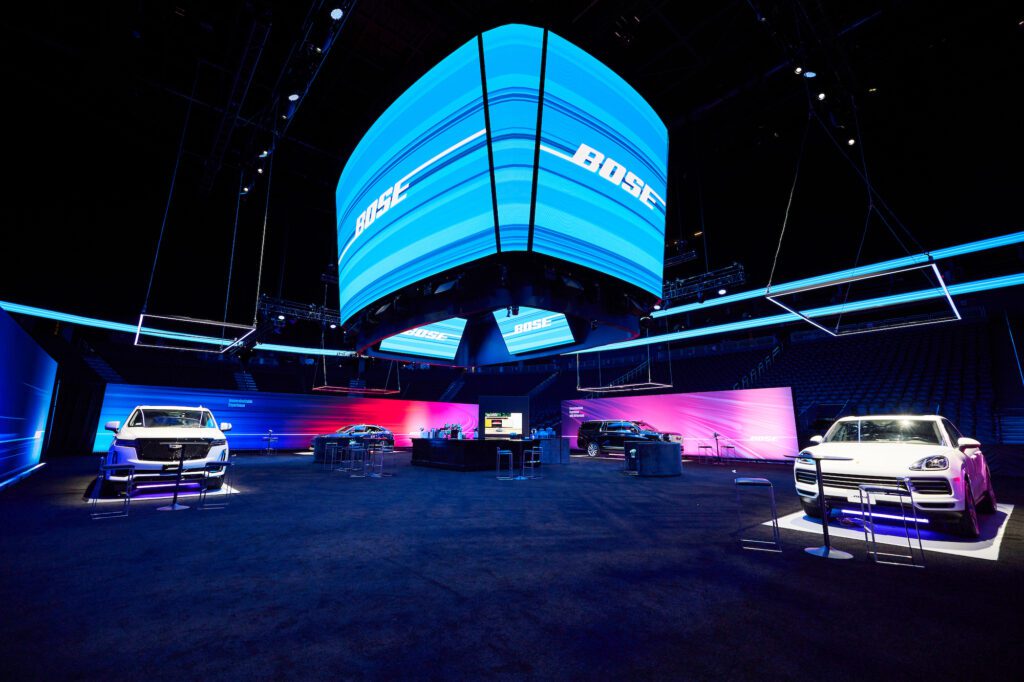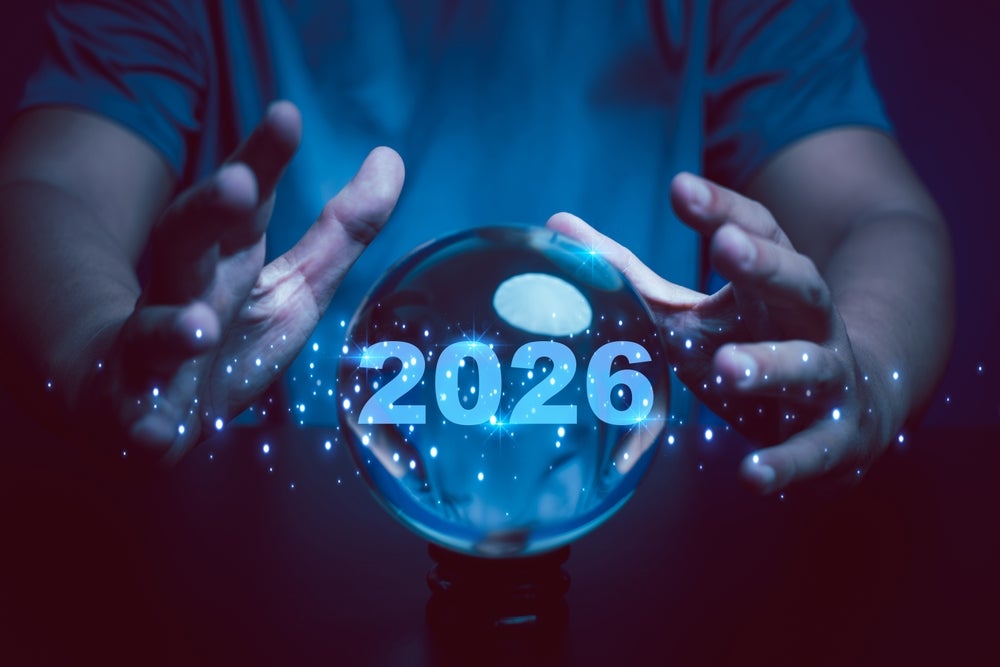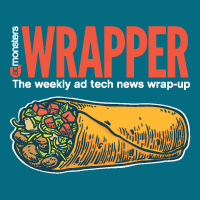As the first CMO at Bose, Jim Mollica has sought to differentiate the audio brand through strategic partnerships that keep it not only connected to culture but intertwined with it.
Bose recently collaborated with Ronnie Fieg, founder of lifestyle brand Kith, to redesign the brand’s iconic 901 speakers, from finish to fabric to color palette. It also partnered with jewelry designer Maggie Simpkins to create diamond-set Bose earbuds, drawing the attention of rapper Travis Scott and several NBA All-Stars. “Our goal is to be there as a rallying point in all these environments where music is endemic to the experience,” Mollica told Chief Marketer.
Automotive partnerships, such as providing in-cabin speakers for Porsche, are critical as well. Bose’s recent acquisition of McIntosh Group, parent company of luxury audio brands McIntosh and Sonus faber, signals more innovation to come in automotive sound and in-car experiences. It’s a key part of the brand’s future, according to Mollica, and shaped its presence at CES this year.
We caught up with the marketing chief at its CES brand space in the T-Mobile Arena to discuss partnership strategy, automotive innovation, the significance of creator-led content and marketing trends to watch.
Chief Marketer: Tell me about Bose’s decision to be here in the Arena, and not on the CES show floor.
Jim Mollica, CMO at Bose: With the new brands McIntosh and Sonos faber, it made a lot of sense for us to have some additional space here, meeting with our partners, talking about all the new innovation within automotive. As you can tell, there’s just so much happening in that space. Does it become a living room with wheels? Is it still a driving experience? How important is the entertainment and communication components of those? Removing people from the distraction—and there’s a lot of extraordinarily confidential innovation that’s in this—probably makes the most sense.
CM: What’s different about the brand’s activation this year?
JM: I can’t speak to distant history; I’ve only been here for four years. But typically, the consumer side of our business doesn’t do any kind of big exhibit. But a lot of our people come here, because it’s become such an encompassing gathering—from technology to marketing, to data, to advertising, to broader business. There’s just a lot of business that can be done, and you find—at least I’ve found—it’s incredibly efficient to come here and meet with lots of people in a three- or four-day period as opposed to multiple trips that you’re trying to get on a calendar.
That being said, our automotive team finds this to be a great opportunity to talk to our existing partners and potential new partners about all of the innovation that we had. We’ve a 40-plus year history in automotive, and it’s been so long that we’ve created so many incredible experiences in-cabin that this is just a nice showcase. We have all of our OEM [Original Equipment Manufacturer] partners here and can spend some real quality time with them.
CM: On the CMO point… In your view, why did the brand decide to hire its first CMO?
JM: The company had such a strong leader and founder. And what I have found is that most founder-led companies have a leader that has found an unarticulated need in the market—not just the product, but the story around the product. Bose is a very product-centric innovation company… And I think the business had realized that they needed to augment that with strong storytelling and emotional pull. We always had incredible technology and best-in-class products, but I don’t know that we always told the story in an emotionally-connective way.
I felt like the opportunity here was not to argue that we have the best ones and zeros. We do, but what most people, when you have a passion point like music, really want is the emotion that music pushes. Whether it’s helping you get through that last mile on your run or the last set at the gym, or elevating the mood of a dinner party that you’re having, or following the misery of a terrible breakup—all these things people use music for, this elevator of emotion. And that was the real opportunity: how to more emotionally and culturally connect the brand.
One of the great ways to do that is to collaborate with other brands, other people that have that same kind of deep connection to music. Our products are really made for the passionate music fan. And if you are going to prioritize the best sound in the world, then you’re going to buy a premium product like ours.
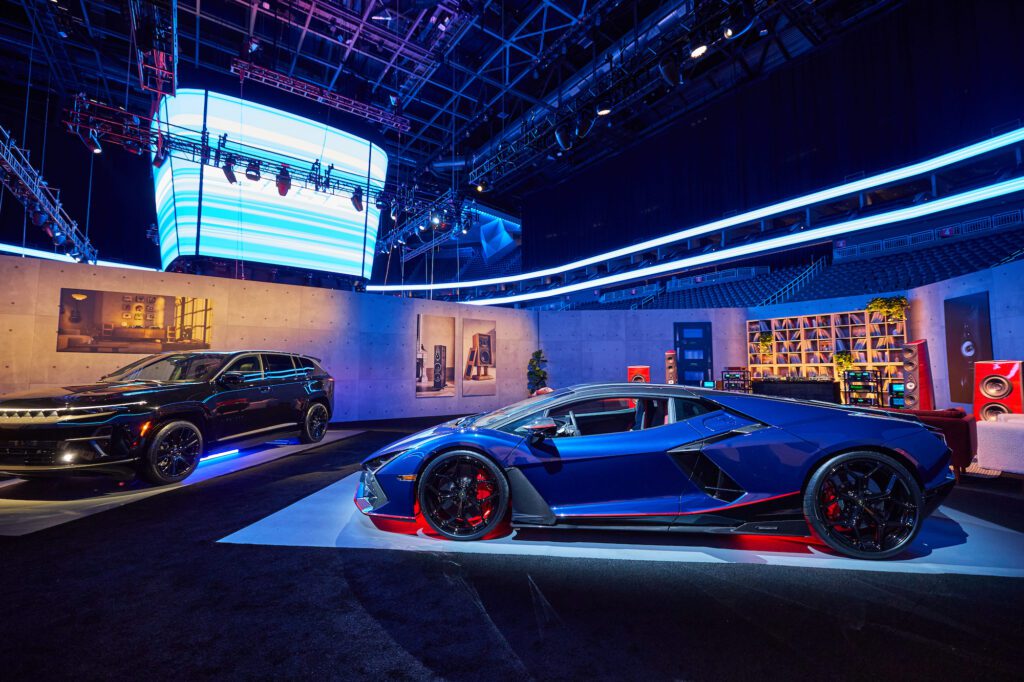
CM: How do you choose those partnerships?
JM: We like to partner with other people that deeply care about music, and it influences who they are. With Ronnie from Kith, we bonded over nineties hip hop and how much that meant to him in starting and creating the brand, and what music inspires him and part of his everyday life. That became the instrumental foundation for our entire partnership. And I think that becomes fertile storytelling that then allows us to play in areas of culture that probably you wouldn’t otherwise [expect us to be in].
CM: So in terms of your vision, cultural partnerships are an important part of it.
JM: Definitely. My goal within the brand was to celebrate that we are this fiercely independent company that is only dedicated to products that produce sound. And we are the only one out there that does this. All of our competitors are these giant tech companies. And they make laptops and phones and washing machines, and they have movie studios and ad networks. Music is a side hustle to them. We have this community of rabid music fans that have dedicated their lives to creating the best products for all these discreet listening occasions. Our Open Ear product is created for a specific use case of listening. Our over-the-ear, the world’s heavyweight champion in noise cancellation, is created for a different kind of music experience for you. The sound bars, our speakers in a vehicle, etc.
I wanted to make sure that we were celebrating that through all of the places where these rabid, passionate music fans would be—where music’s endemic, where it’s really part of it. Basketball and music are so intertwined… [It’s] the same thing with festivals or fashion shows. When we first showed up at New York Fashion Week, a lot of people didn’t understand why we’d be so intertwined with that as well. But music and fashion inspire one another. All fashion shows are created to a soundtrack. Many of the designers are using certain artists or records that help influence them for that season’s design. And that’s where we launched our Open Ear products last year, at Paris Fashion Week with Kith. Our goal is to be there as a rallying point in all these environments where music is endemic to the experience.
CM: What’s your strategy to attract younger generations? I imagine you’re doing that through cultural partnerships. But anything else?
JM: A lot of this is through the way that you reach them and introducing them to a brand with such backstory and heritage… Our fastest growing group of consumers is 18 to 24. And it’s partly [because of] the artists that we’re partnering with. We’re not partnering with the biggest and the most famous. We’re partnering with the artist’s artists, and we’re going long tail, and we’re going sub genres—because that’s what you expect from a music-first, independent brand.
So the signal, when we do a partnership with [rapper] Central Cee in the UK, becomes, oh, wow, that’s interesting. We had done something with a storied indie band, Guided by Voices. We had done something with a Detroit experimental group called Wolf Eyes. And then part of is the content and the media that we use. We spend a lot of time creating content—not advertising—earning people’s time and attention on platforms like TikTok and YouTube.
CM: So creator-led content is huge.
JM: Absolutely. Some of it we do, some of it’s production, a lot of it is creator-led. We treat is almost like a programming slate. For my background, I spent a lot of time at Disney and Viacom/Paramount. And I learned that you can create really interesting, compelling stories that don’t have to be advertising. Your product or the DNA of what you’re focused on is part of the meta theme, but entertaining people and getting their attention and being connected to the core principles of what your brand’s all about are really the most compelling elements.
So [it’s about] doing that with creators and giving them latitude to go and create, and creating a significant flow of content. We probably produce 10,000 pieces of content a month, flowing that through channels like TikTok, Snap, YouTube. Creating longform on YouTube has been instrumental in the passion and interest of younger audiences. The most successful things we have are the more niche influencers that have a lot more authority.
CM: How do you balance your efforts to target more niche with bigger brand awareness plays? Because it’s getting more and more niche, and it seems like it’s additional.
JM: It is. I think one of the advantages I have is having experience as a programmer, coming from a TV network, or a digital publisher when I was in my old world. You create development slates and you hire people that aren’t based in advertising. They’re storytellers that are creating content for you. And some of that is amassing armies and creating great content. And some of that is going specifically to certain production companies that are creating certain things. And other moments, it’s engaging in podcasts and in a very different format around music and the celebration of music. And some of that’s experiential. I think all of those things are additive.
Yes, there’s a moment for brand advertising on TV. It’s becoming less and less linear and more and more streaming. I’m finding that a bunch of the content that we ended up creating for different purposes works incredibly well in streaming, where it wouldn’t work as well in linear, because of dynamic insertion and with the ad units [being] more highly-targeted.
The key is that you can’t get caught up in one channel, and you have to figure out how you share the burden of content creation with the outside world. And then, what are you doing on your own? And then what becomes more AI-driven that can be parsed? So you can take care of some of those long-tail, geographical, regional things.
CM: Back to technology, since we’re at CES… Automotive is more on display here than consumer products, as you mentioned. Is automotive the future of the company?
JM: I think it’s part of the future. It’s an incredibly important part of our company and a really large part of our business. But I think you really can’t have one without the other. If you create an incredibly strong consumer brand, it obviously pays massive dividends to licenses and partnerships within other arenas, vehicles being one of them. Other technology products can also incorporate sound into it. It just becomes a much more compelling partnership that way. And then once your product’s in a Porsche, for example, the way that that reinforces in this virtuous circle, the consumer demand is really a beautiful thing. But I think it has to start with creating a consumer brand, taking it into these partnerships and letting those partnerships then help accentuate it back into the consumer brand.
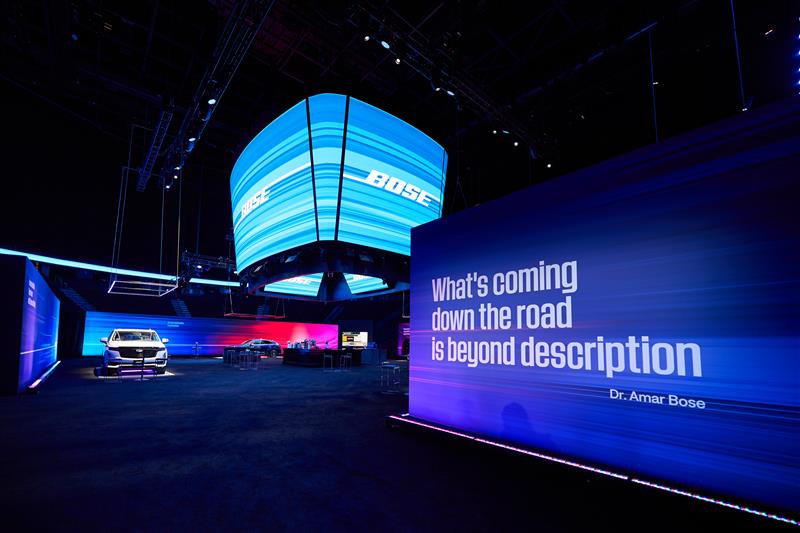
CM: My last question for you: Are there any marketing trends that you expect to break through (or fade out) in the next year?
JM: I think the way that we consider the viewership around sports programming and some live events feels broken, feels off. We’re looking at ratings, but in reality, if you look at the way people are consuming award shows or sporting events, so much of that is coming from clips and highlights that are being created by the leagues, but they’re not necessarily seen as valuable engagement yet, because they’re not measured together into an attention or engagement metric. And I think figuring out how you move to that model for brands is really important in the linear [TV] side of the world.
I continue to think that podcasts—with the amount of consumer consumption, attention, share of media time from consumers—is still a dramatically undervalued play for people. The key is figuring out the right kind of content format that works for you there, and I think everyone’s still experimenting.
CM: Podcast video is picking up quite a bit.
JM: A hundred percent. But even just audio podcasts would still drive the majority of the listens. But think about it: Are you creating this high-level, audio insertion with an ambassador, or are you using a recorded live read from the host? Is there a completely different storyline that you’re adding? Are you creating your own serialized podcast or experience? So I think there’s a huge opportunity there.
While you have powerful recommendation engines, I think they’re still missing an element of human curation and taste that will make it easier. I don’t know about you, but as great as the algorithm is on Netflix, I still can’t find something to watch within 25 minutes. It’s the same thing with Spotify, which is wonderful at the content that they recommend, but there feels like there’s an element [missing], like another layer of curation. Who makes sense of the metadata? I think there will be a push towards that coming in the future.

